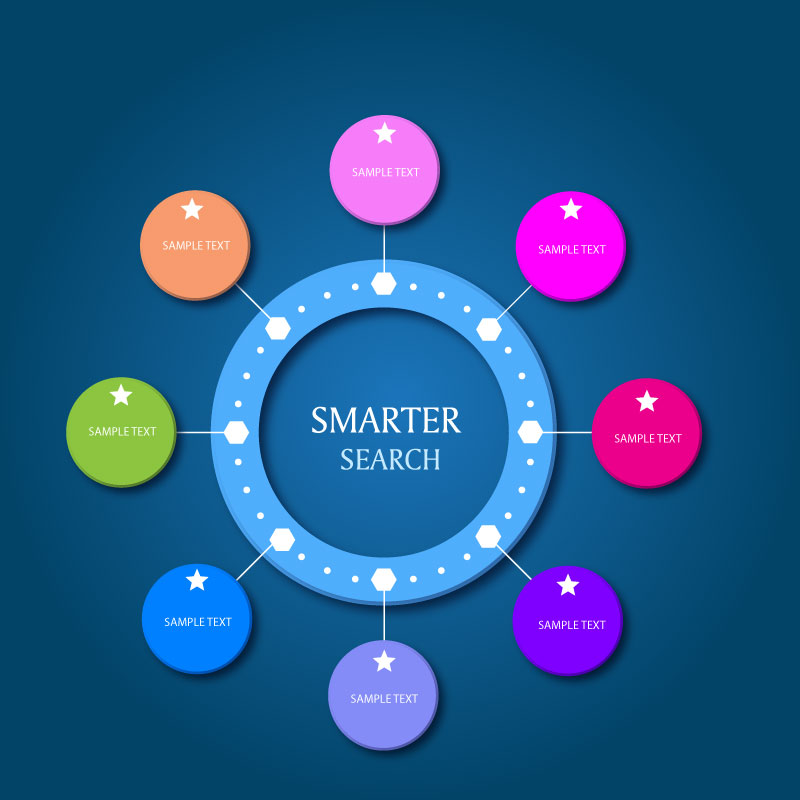Analytics Rediscovered
How search technologies can help your business grow?
In today’s business environment, Search and associated technologies drive a wide range of use cases in every business that help businesses lead and grow. Often companies use search as yet another IT solution or application to create or build on their existing search...Analytics Rediscovered
Event Analytics Event is defined as any “incident” or a “transaction” at a point in time that may have monetary impact or not. For example and order is a transaction event with monetary values while a student attending a class or a web page visits are samples of...Search and Big Data
With the advent of new data sources, ability of “big data” architectures to handle huge data volumes at reduced cost, powerful search interfaces and machine learning techniques are becoming the beacon based on which of powerful business intelligence and...
Event Analytics
Event is defined as any “incident” or a “transaction” at a point in time that may have monetary impact or not. For example and order is a transaction event with monetary values while a student attending a class or a web page visits are samples of events without a monetary attributes but nevertheless an event that happened. Each type of event is associated with a specific set of attributes that defines the event like the time and place of the event, people associated with the event (if it involves more than one party– all parties). In business Intelligence world the event attributes are sometimes called the dimensions while the actual event is called the fact (measure) . Performing dimensional analysis and its impact on the fact is called the event analytics and it is at the heart of the business intelligence. All businesses have multiple processes and ‘events’ that characterize the specific business and analysis of those events are critical for the understanding and successful running of the business. Event Analytics are traditionally characterized with structured data analysis with relational databases but the trend is fast changing now.
Content Analytics
The term “Content Analytics” has been coined to cover a range of advanced search and content reporting technologies. Sophisticated content reporting across text documents and rich media file-types has created the opportunity to report and research across unstructured content, bringing the same capabilities of strategic insight and improved decision-making as Business Intelligence (BI) reporting brings to structured content. Search analytics tools provide trend analysis, pattern recognition and exception detection.The possibilities of conventional search, and the potential savings that could be achieved by application of content analytics to a number of business scenarios such as fraud detection, asset protection, healthcare research and market monitoring is phenomenal. Content analytics among others include areas such as
● Web analytics
● Faceted search tools
● Text analytics
● Social media monitoring
● Sentiment analysis
The aim of BI is normally seen as being the discovery of trends, both historic and with suitable analysis and extrapolation, of future options and possibilities for those trends. It is seen as providing actionable information in order to inform decision making. BI is firmly embedded in the world of structured data, relational database systems and data warehouses. So we might extrapolate from this that content analytics is about doing the same for our massive, and ever increasing stores of unstructured data. Analyzing the “internals” of our content items, for example using sophisticated text analytics on our burgeoning document stores, in order to discover new insights? Another view of content analytics is one that is more akin in my mind to web analytics. It’s about analyzing how people are using or interacting with content. This is already achieved to some extent in the marriage of BI “reporting dashboard” technologies with business process management or workflow technologies.


Location Analytics
Location Analytics is the new aspect of the dimensional analysis with emphasis on the location of the event or content. The Content of the event attributes are analyzed with location perspective. This is made possible with the ability to capture additional details of the location, country to specific location coordinates from Global positioning data that can be associated with the event or content and the real time availability of the location data. Location Analytics can answer specific questions like where are my tweets or page visits or sales coming from– country, region or what gas stations/restaurants are available within 5 miles radius. Companies like google, facebook and twitter provide the location data for further analytics.
Real time analytics
Traditionally the business intelligence relied on the historic data collected, processed in data warehouses to report on the business events. However with the advent of cutting edge technology advancements in storage, processing and querying capabilities in databases, the analytics is moving to the center stage of meeting the business requirements, real time. The data is captured real time, processed, stored and reported on a continuous basis especially in industries like finance where the time sensitive data has to be processes and reported faster to consumers. Also in many other industries the need for real time analytics is pushing the companies to collect and process the data efficient and faster.


Predictive
Predictive analytics is the branch of data mining concerned with the prediction of future probabilities and trends. The central element of predictive analytics is the predictor, a variable that can be measured for an individual or other entity to predict future behavior. For example, an insurance company is likely to take into account potential driving safety predictors such as age, gender, and driving record when issuing car insurance policies. Multiple predictors are combined into a predictive model, which, when subjected to analysis, can be used to forecast future probabilities with an acceptable level of reliability. In predictive modeling, data is collected, a statistical model is formulated, predictions are made and the model is validated (or revised) as additional data becomes available. Predictive analytics are applied to many research areas, including meteorology, security, genetics, economics, and marketing.

Recent Comments